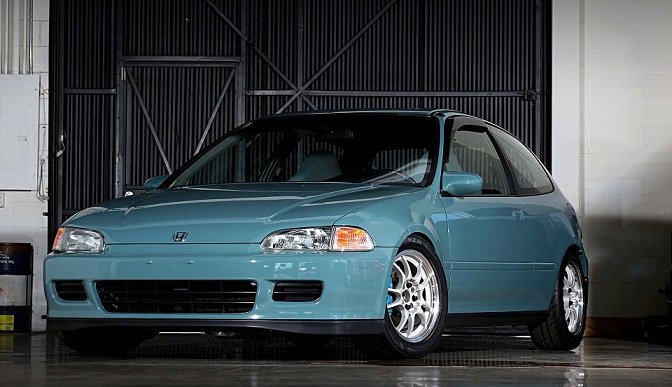The exhaust manifold on your 2001 Honda Civic connects each exhaust port, merging gases into a single pipe. It plays a key role in the engine. Though important, the stock manifold goes unnoticed until wear and corrosion set in over time. This damages cut efficiency and clog the exit of exhaust fumes diminishing performance. Replacing it can restore output.
A worn 2001 Honda Civic exhaust manifold reduces your Civic’s power output, especially at higher rpm. By upgrading to a performance 2001 honda civic exhaust manifold, you can undo this restriction and access hidden horsepower waiting to be unlocked. In this guide, we will explain how a new 2001 honda civic exhaust manifold improves acceleration and throttle response. We will also provide tips on installation and maintenance to ensure you fully take advantage of the upgrade.
Signs Your Stock Manifold Needs Replacing
Is your 2001 Civic slower to speed up, especially under heavy acceleration? It may be time to replace the exhaust manifold if so. A worn manifold causes uneven exhaust flows between cylinders, resulting in a rough idle and lack of power. Reduced performance shows it is restricting exhaust exit and damaging engine function. Swapping in a new manifold can restore smooth operation and potent acceleration.
Look closely at the manifold – cracks or holes that allow exhaust gas to leak out indicate it’s time has come. The surface may be warped or corroded, further restricting exhaust flow. Uneven sound levels between cylinders show exhaust flow is not being merged efficiently. Replacing the stock manifold can eliminate these issues and wake up your Civic.
Benefits of a Performance Exhaust Manifold
- Increased horsepower potential – A free-flow design maximizes exhaust flow for better breathing and more robust power output across the rev range.
- Smoother acceleration – By merging pulses more evenly, a quality aftermarket manifold results in a linear throttle response without bogging down.
- Improved gas mileage – Less restriction translates to more complete fuel combustion and better fuel efficiency versus the stock unit under normal driving.
- Better high RPM performance – Hi-flow manifolds shine at peak power zones over 5,000RPM where the gains can be most noticeable.
- Cooler engine temps – Allowing exhaust gasses to expel more freely prevents residual heat from recirculating into cylinders.
- Reduced exhaust back pressure – A performance header lowers the resistance against exhaust gas exiting, lessening engine load.
- Bolt-on power boost – With no engine internals modified, only swapping manifolds provide an honest and modular power upgrade.
Manifold Replacement Process
Replacing the exhaust manifold requires basic hand tools and can be done in your home garage. First, drain the coolant and disconnect the battery cable for safety. Then, remove the oxygen sensors from the header and disconnect the exhaust pipes from their mounting points. Loosen any rack mount or bracket bolts securing the manifold.
With the exhaust hanging free, remove the manifold bolts in a systematic pattern and extract the old manifold. Scrape off any residual gasket material before applying a new gasket. Line up the replacement header and start the bolts by hand to avoid cross-threading. Once snug, tighten bolts in a criss-cross pattern and reinstall components in reverse order. Refill the coolant when done.
Manifold Upgrade Options
- Factory-style header for emissions compliance with minimal gains.
- Free-flow designs optimize gas exchange for noticeable horsepower increases.
- Dual offers better breathability but may require a y-pipe and is louder.
- Flanges bolt to head easier but log maintains structural integrity better.
- Thinner/lighter headers like stainless provide better heat dissipation than stock.
- Unique snaking collectors smooth pulses for improved spool response.
- Ceramic-coated prevents corrosion for longer life versus bare metal.
- Covers protect ceramic coatings and reduce under-hood heat soaking.
- Bolt-ons are convenient to install but welded have a stricter flange fitment.
Anticipated Performance Gains
With an upgraded high-flow exhaust manifold, owners can anticipate a gain of 5 to 10 horsepower throughout the powerband. This is due to increased gas velocity that allows the engine to breathe easier. The gains are most noticeable above 3,000 RPM where back pressure affects flow the most. Throttle response is also sharpened thanks to more evenly pulsed exhaust exiting the cylinders. Overall, acceleration is enhanced as the manifold unleashes previously restricted torque and power.
Maintenance and Part Life
To ensure long-term enjoyment from the exhaust manifold upgrade, drivers should inspect it periodically. Check that all bolts remain properly tightened, as vibrations may loosen them over time. Take a look for any cracks that could form in ceramic coatings or headers. Also watch for exhaust leaks at the manifold gasket seal or flange connections. With proactive maintenance, a quality aftermarket header can outlast the lifetime of the vehicle. Simple checks go a long way to preserving your performance investment.
Conclusion
Upgrading the exhaust manifold is an affordable way to significantly wake up the performance of your 2001 Honda Civic. For under $200 invested, drivers report more torque, stronger acceleration, and an improved auditory experience versus the restrictive stock unit. Not only will the bolt-on power boost be immediately noticeable, but it also makes the Civic more enjoyable to drive day-to-day. With the manifold replacement being a simple DIY job, anyone can unlock this sleeping horsepower within their engine bay. Overall, a new manifold proves to be a smart performance modification for any 2001 Civic owner.


